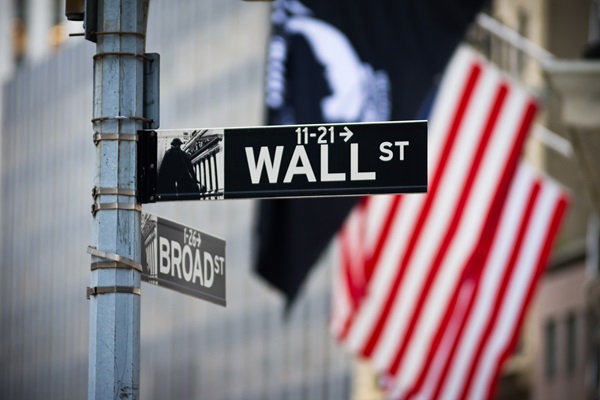.png)

Dambisa Moyo, an international economist, is the author of four New York Times bestselling books.
March 8, 2025 at 1:02 PM IST
After 12 months of outperforming the rest of the world, the US market faces a potential correction, and prudent investors and business leaders are watching developments closely and hedging their risks accordingly. Amid falling consumer sentiment, sticky inflation, and rising initial jobless claims, the Federal Reserve Bank of Atlanta’s closely watched GDPNow model already shows a contraction for the first quarter of 2025.
Meanwhile, many other economies remain anemic. For example, Germany – Europe’s largest economy – anticipates only 0.2% growth this year, according to the Bundesbank. Globally, an incipient trade war, stretched government finances, and the heightened risk of conflict are making a protracted market selloff more likely.
Nonetheless, while some indicators suggest that investors are scaling back their US exposure, others suggest that market participants are being rather complacent about the risks. Since this mixed picture could change quite quickly, investors should keep a close eye on the following metrics.
First, stronger relative performance in other markets could be a warning. So far this year, Europe’s EURO STOXX 50 index has rallied by around 11%, and Hong Kong’s Hang Seng has increased by more than 14%, whereas the Dow Jones Industrial Average and the S&P 500 have lagged at 1.5% and -0.52%, respectively. According to the Bank of America, allocations to US Equities were 17% overweight in February, but that was down from 19% in January, and from 36% in December.
This apparent rotation out of US markets represents a trend reversal after years of relentless bullishness. In European markets, the prospect of higher defense spending is providing a big boost to valuations in related sectors, with defense and security stocks rising by as much as 22% in the first week of March.
The second indicator investors should watch is currency moves against the dollar. There are signs that a US selloff could extend beyond equities, with the US dollar topping out against the Canadian dollar and the euro, at C$1.45 and €0.97, respectively.
Third, a significant amount of cash is sitting on the sidelines. According to Richard Bernstein Advisors, $7 trillion was held in money market funds at the end of 2024, implying either a “risk-off” sentiment or at least a reluctance to buy riskier US assets.
At the same time, Bank of America’s February survey of institutional investors showed that cash holdings, at 3.5% of portfolios, have fallen to their lowest level since 2010 – down from 3.9% in January. While this could indicate a “risk-on” position, Bank of America notes that such low levels of cash have prompted a “contrarian sell signal” for risk assets.
A fourth indicator is gold, which tends to be bought as insurance against a market crash. A particularly interesting trend here has been the movement of physical holdings. While gold lease rates have risen in London, they have fallen in New York, signaling increased demand from US investors who are most likely hedging against a market sell-off.
Then there is the US Treasury market, specifically the decline in real interest rates, with the yield on the benchmark ten-year Treasury recently falling to 4.16% in nominal terms. There are at least two explanations for this. On one hand, it could mean that investors are moving to safe assets because they are worried about an economic slowdown or recession (though that is not yet priced into the markets). On the other hand, it could reflect the view that the Trump administration is strengthening the government balance sheet by cutting spending, which would reduce the risk premium on US government debt. On balance, the first explanation has much more support for it – as evidenced by other indicators, such as weakening consumer sentiment.
But notwithstanding the notable moves toward safer assets, other indicators reflect complacency in the face of heightened macro uncertainty. Credit spreads (between higher- and lower-risk debt securities) are still tight, because investors have not made the big switch to risk-free US Treasuries. Moreover, in equities, defensive and cyclical sectors – such as utilities or consumer staples – have not massively outperformed non-cyclical or growth sectors, again implying that investors are not yet spooked. The historically elevated volume of assets under management in leveraged exchange-traded funds (a popular, speculative retail trade) shows only small signs of a declining appetite for risk.
In 2016, leveraged/inverse ETFs made up approximately 2% of a total ETF market of about $2 trillion in assets under management, according to Strategas. Now, leveraged/inverse ETFs make up $81 billion, or 8%, of an $11 trillion ETF market.
Finally, put options (a form of downside protection) are not very expensive, which suggests that investors are not yet worried enough to bet on a significant decline in US stock markets.
Of course, investors’ reactions to these indicators will depend on their own asset exposures, portfolio attributes, and risk appetites. One reading of this mixed picture is that institutional investors are taking the lead in responding to technical pressure and hedging themselves against a market downturn. Meanwhile, retail investors and traders have yet to move out of US risk assets. That means plenty of investors are eschewing insurance against a downturn. It is anyone’s guess when they may decide to run for cover.




